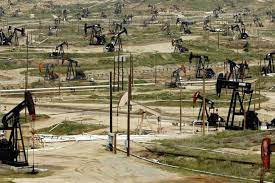Costs and access to the grid are the main hurdles U.S. oil drillers and producers face as they seek to electrify operations, the latest Dallas Fed Energy Survey showed this week.
More than half of the exploration and production firms operating in Texas, northern Louisiana, and southern New Mexico have either electrified or plan to fully or partially electrify their oilfield operations.
Service firms are less likely to electrify compared to small and large E&P companies, according to Dallas Fed’s quarterly survey of executives.
While the majority of E&P firms look to electrify at least part of their oilfield operations, access to the grid, stability of the grid, and the high costs of going electric have emerged as the top challenges for U.S. operators.
Electrification reduces diesel consumption and emissions from oilfield operations, as well as noise and pollution from rigs and fracking equipment.
But the cost of going electric, the lead times for equipment, and uncertainties about future access to the grid and grid stability are the top challenges for the industry to fully embrace electrified oilfield operations.
Currently, 18% of executives said in the Dallas Fed Energy Survey that their firm’s oilfield operations are already fully electrified. Another 6% of executives said they aim to completely electrify oilfield operations for their firm, and an additional 31% said they look to partially electrify operations. The remaining 45% said they do not plan to do so.
Small E&P firms, with crude oil production of fewer than 10,000 barrels per day, have electrified operations more than large firms and services companies, with 28% of small firms already fully electrified, compared with 9% percent of oil and gas support services firms and 6% of large E&P firms. Service firms are also slightly more likely than small and large companies to indicate they are not aiming to electrify their oilfield operations, the survey found.
Among the firms aiming to electrify or already electrified, 29% of executives of the companies focused on the Permian cited uncertainty about future access to the grid as the top challenge they see in electrification. Another 17% say that uncertainty about future grid stability is their top concern.
Firms embracing electrification with operations primarily outside the Permian cited costs as the top hurdle, 30% of executives, followed by 26% who see lead times for equipment as the top challenge.
“Too expensive” is the top challenge of 48% of executives of Texas, New Mexico, and Louisiana firms not aiming to electrify operations. It is followed by concerns about grid access and grid stability.
“Most of our rigs are capable of running off grid power, but the logistical (regulatory and permitting) hurdles that our customers have to go through to bring power to the rig is formidable and expensive,” an executive at a service firm said in comments to the survey’s questions.
Another executive at a service firm commented, “To add the additional costs to electrify equipment, the returns have to be there through higher prices or reduced costs. That is not the case in our segment.”
A third executive at an oilfield service company noted that their firm’s operations are far too mobile and fast-paced to install the necessary electrical infrastructure. Moreover, suppliers are currently not making electrical options for many of the types of machinery, the executive added.
Electrification can help companies slash emissions from producing facilities by as much as 86% by electrifying the rigs and platforms to run on renewable electricity or natural gas that would be flared otherwise, Rystad Ene

 Iran Energy News Oil, Gas, Petrochemical and Energy Field Specialized Channel
Iran Energy News Oil, Gas, Petrochemical and Energy Field Specialized Channel



